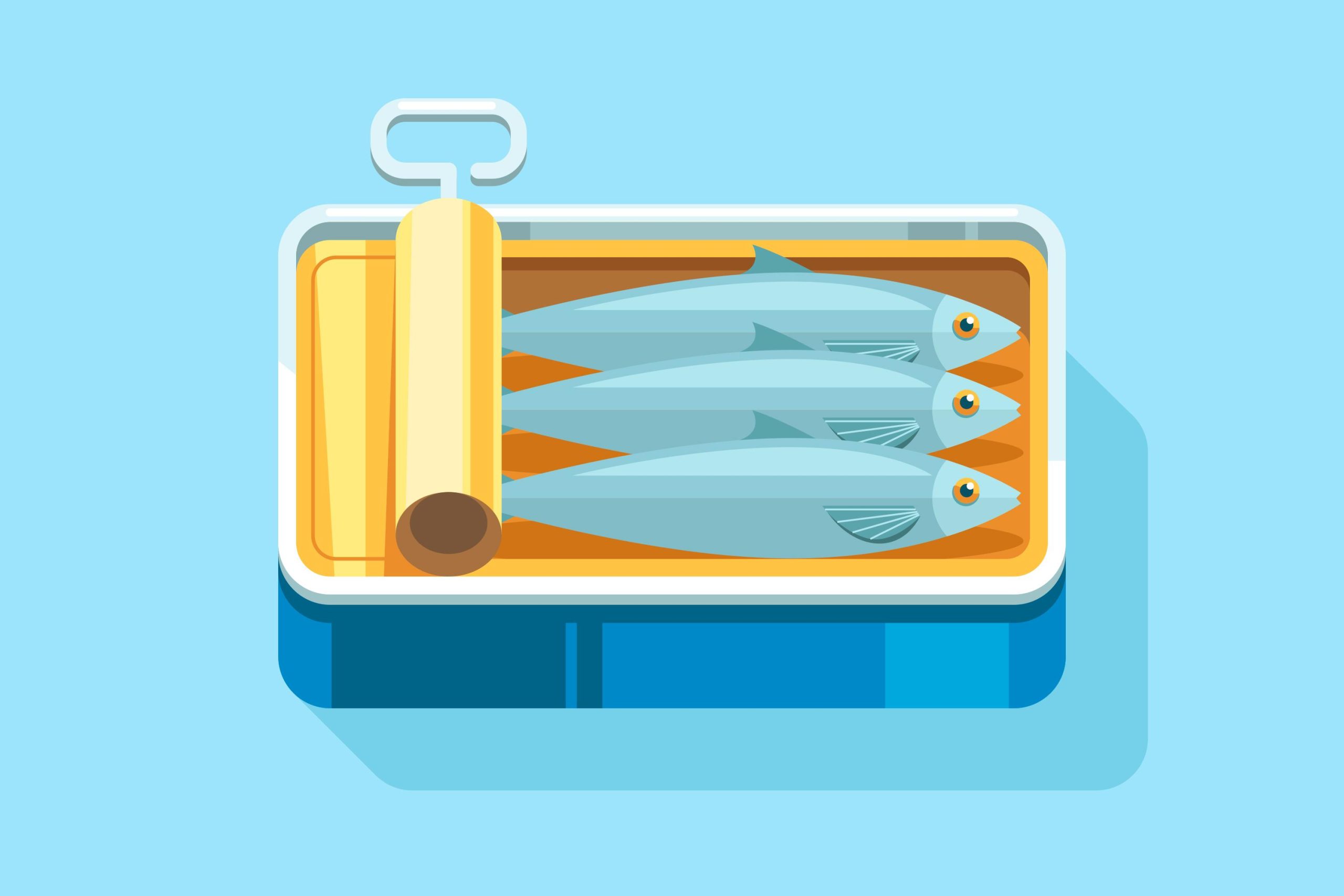It seems like a convenient and straightforward solution, right? However, there’s more to it than meets the eye. By exploring the reasons behind this common kitchen dilemma, we will uncover the potential risks and implications of storing tinned fish in its can. So, before you dismiss this issue as a trivial matter, let’s dive into the world of food preservation and discover why it’s important to handle your canned fish with care.
Risks of Storing Canned Fish in the Fridge
Storing canned fish in the fridge poses potential risks to both the quality and safety of the food. There are a few reasons why it is not recommended. First, canned fish can contain potential health risks if stored improperly. The lining of the can may leach metals, especially for acidic fish like canned tomatoes. Additionally, concerns about Bisphenol-A (BPA) in canned food packaging have been raised. BPA is known to mimic the estrogen hormone and has been linked to an increased risk for certain diseases. To mitigate these risks, it is best to transfer the canned fish to an airtight container before refrigerating. This not only avoids the potential health risks but also helps maintain the taste and texture of the fish. Furthermore, opting for alternatives to canned fish, such as fresh or frozen options, can provide a safer and more sustainable choice. It is important to consider the impact of our choices on both our health and the environment. By following the best storage practices and supporting sustainable fishing practices, we can ensure the quality and safety of our food.
Impact of Corrosion on Canned Fish
Corrosion of the can used to store fish can have a significant impact on the quality and safety of the canned fish. One of the risks associated with corrosion is the potential for metal leaching into the fish. This is a concern because certain metals, such as tin or iron, can dissolve into the food, affecting its taste and potentially posing health concerns. The FDA has regulations in place to ensure the safety of canned food, including limits on the amount of metal that can leach into food. To address these concerns, some food manufacturers have started using BPA-free packaging, which eliminates the risk of BPA leaching from the can lining. Additionally, corrosion prevention measures, such as proper sealing and storage, can help minimize the risk of metal leaching. It is important to follow FDA guidelines and consume refrigerated canned fish within the recommended timeframe to ensure its quality and safety.
Importance of Using Clean Containers for Canned Fish
Using clean containers for canned fish is crucial for ensuring its safety and preventing any potential contamination. Proper washing techniques and maintaining a clean container offer several benefits. Firstly, it helps prevent spoilage by removing any bacteria or contaminants that may be present. This reduces the risk of foodborne illnesses and ensures the fish stays fresh for longer. Additionally, using a clean container with a lid helps to maintain the freshness and flavor of the canned fish. The lid helps to prevent the fish from drying out and developing an unpleasant taste. It is important to note that recommended storage time for refrigerated canned fish is within four days. By using a clean container and following proper storage guidelines, you can extend the shelf life of the fish and enjoy it safely. Remember to wash the container thoroughly before use and ensure it is completely dry before transferring the fish.
Considerations for Flavor and Quality of Canned Fish
To ensure the best flavor and quality of your canned fish, it is important to consider a few key factors. Canned fish preservation is essential for maintaining its freshness and taste. To preserve the flavor, it is recommended to use flavor preservation techniques such as transferring the fish to another container. This helps to eliminate the “canned” taste that can sometimes occur. Quality maintenance tips include storing the fish in a cool, dry place away from direct sunlight and extreme temperatures. It is also important to check for any freshness indicators, such as bulging or dented cans, foul odors, or discoloration. Following the best storage practices, such as refrigerating opened cans in airtight containers, can help prolong the shelf life of the fish and maintain its quality. By considering these factors, you can ensure that your canned fish remains fresh, flavorful, and of the highest quality.
Additional Information and Recommendations
For additional information and recommendations on storing canned food, it is important to consider a few key factors. Firstly, the benefits of BPA-free packaging should be considered. BPA is a chemical found in some canned food packaging that has been linked to health concerns. Opting for BPA-free packaging can help reduce the risk of exposure to this chemical.
When it comes to canned fish, proper storage is crucial. It is recommended to transfer the fish to a different container after opening the can. This helps to maintain the flavor and quality of the fish. Additionally, it is important to check the use-by dates on canned fish. Consuming fish that is past its use-by date can pose health risks.
The impact of metal leaching on canned fish should also be taken into account. Metal leaching can occur when acidic foods are stored in cans for prolonged periods. This can affect the taste and quality of the fish.
To ensure the longevity of canned fish, it is important to store it in a cool, dry place. Avoid exposing the cans to excessive heat or moisture. Following these recommendations will help to maintain the freshness and quality of canned fish.
Proper Storage and Longevity of Canned Fish
Properly storing canned fish is essential for maintaining its freshness and quality. To preserve the freshness and prolong the shelf life of canned fish, it is important to follow proper storage techniques. When storing canned fish, it is recommended to transfer the contents to a different container. This helps avoid a metallic taste that may occur when storing the fish in the can. Choose a container that is airtight and preferably made of glass to maintain the flavor and quality of the fish. Plastic lids can also be used, but the fish should still be treated as perishable and stored in the refrigerator. It is important to check the label instructions for specific storage requirements, as some types of canned fish may require refrigeration due to reduced sugar content. Regularly cleaning out the pantry and discarding out-of-date canned fish is also important to ensure food safety. By following these proper storage techniques, you can prolong the shelf life of canned fish and enjoy its freshness for longer.
Precautions and Safety Measures for Canned Fish
When handling canned fish, it is important to take necessary precautions to ensure safety and maintain its quality. To store canned fish properly, follow these storage tips. First, check the expiration date on the can and consume the fish before that date to avoid any health concerns. If the can is opened and there is leftover fish, transfer it to an airtight container to maintain its freshness. Glass containers are recommended as they do not react with the fish and do not retain odors. This helps prevent potential contaminants from affecting the fish’s taste. Label the container with the date it was stored to keep track of its freshness. Additionally, make sure to clean the container thoroughly before using it to store the fish. This helps avoid any cross-contamination from previous contents. By following these precautions and using the recommended containers, you can ensure the safety and quality of your canned fish.


